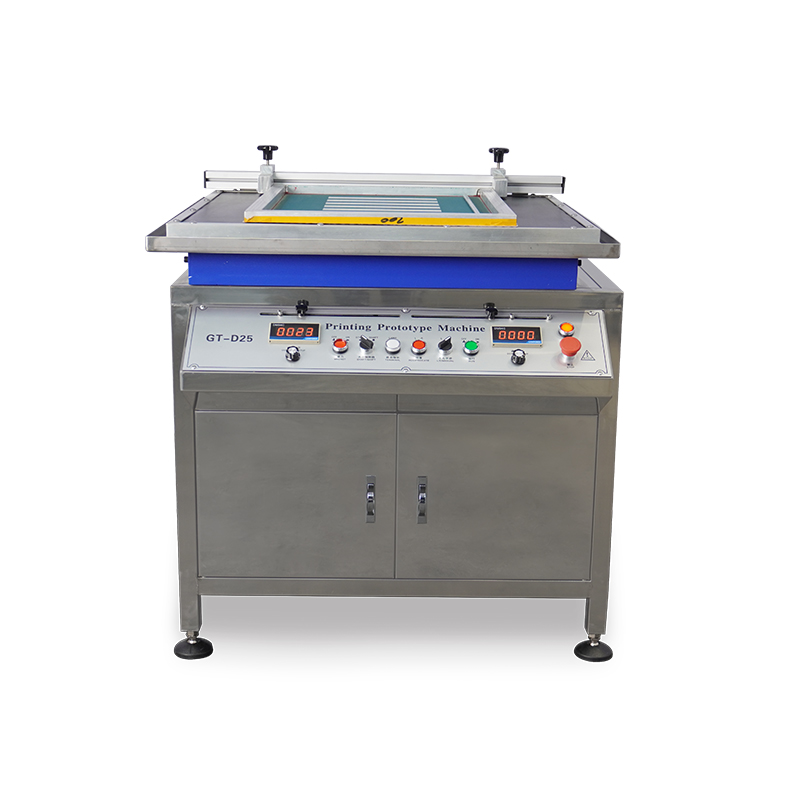The Role of Printing Prototype Machine in Synthetic Fiber Dyeing Processes
In the textile industry, synthetic fibers have gained significant traction due to their versatility, durability, and cost-effectiveness. However, achieving consistent dyeing results for synthetic fibers can be a challenging process. The Printing Prototype Machine GT-D25 plays a crucial role in optimizing dyeing processes for synthetic fibers, ensuring precision, efficiency.
GESTER delves into the importance of the Printing Prototype Machine in synthetic fiber dyeing, exploring its features, applications, and benefits.

Understanding the Printing Prototype Machine GT-D25
The Printing Prototype Machine GT-D25 is a universal tool used extensively in printing and dyeing laboratories. Its sophisticated design and cutting-edge features allow for accurate simulation of large-scale printing and dyeing processes on a smaller scale.
Key Features and Their Role in Dyeing Processes
The Printing Prototype Machine boasts several advanced features that enhance its utility in dyeing applications:
1. Electromagnet-Powered Roller Squeegee:
The use of an electromagnet-driven squeegee ensures smooth, consistent application of dye across the fabric. This feature is crucial for synthetic fibers, which often require uniform dye distribution to avoid patchiness.
2. Adjustable Scraping Strength:
The ability to freely set scraping strength offers precise control over dye penetration, making it easier to manage the varying absorption properties of synthetic fibers like polyester, nylon, and acrylic.
3. Variable Speed Control:
Frequency conversion technology allows users to adjust scraping speed, ensuring compatibility with different fabric types and dye viscosities. This versatility is vital for achieving optimal results during the color matching process.
4. One-Time and Circulate Scraping Modes:
These modes provide flexibility for different testing requirements. For initial color testing, a one-time scrape may suffice, while circulate scraping ensures thorough dye application for more detailed evaluations.
5. Customizable Scraping Distance:
The ability to set scraping distances allows for precise control over the application area, making it easier to replicate specific patterns and designs during the printing strike-off process.
Applications in Synthetic Fiber Dyeing
Synthetic fibers are known for their durability and versatility, but their dyeing process often involves complex challenges such as poor dye affinity, uneven coloration, and dye migration. The Printing Prototype Machine GT-D25 addresses these issues through its ability to replicate real-world conditions and test various dyeing parameters.
1. Printing Strike-Off Process
The strike-off process is a preliminary step in fabric printing, where small samples are created to evaluate patterns, colors, and dye penetration. GESTER Printing Prototype Machine excels in this area by offering precision and repeatability, ensuring that the samples closely represent the final production outcomes. For synthetic fibers, which require careful handling to prevent dye migration, the machine’s advanced controls are invaluable.
2. Dye Color Matching
Achieving accurate color matching is particularly challenging with synthetic fibers due to their resistance to dyes. The Printing Prototype Machine allows for meticulous testing of dye formulations and application techniques, enabling technicians to perfect the process before scaling up to full production. Its customizable scraping settings ensure that even the most stubborn synthetic materials can achieve vibrant, uniform colors.
Challenges Addressed by GT-D25 in Synthetic Fiber Dyeing
Synthetic fibers often exhibit characteristics like hydrophobicity, which makes them resistant to water-based dyes. Additionally, their chemical structures may interact differently with dyes, leading to inconsistent results. The Printing Prototype Machine GT-D25 mitigates these challenges by enabling precise control over every aspect of the dyeing process, from dye application pressure to scraping speed and distance.
For example, when working with polyester—a common synthetic material—the machine’s adjustable scraping strength and variable speed control help ensure that the dye penetrates evenly without causing damage to the fabric. Similarly, for nylon, which is prone to color bleeding, the circulate scraping mode allows for a more controlled application that minimizes these issues.
